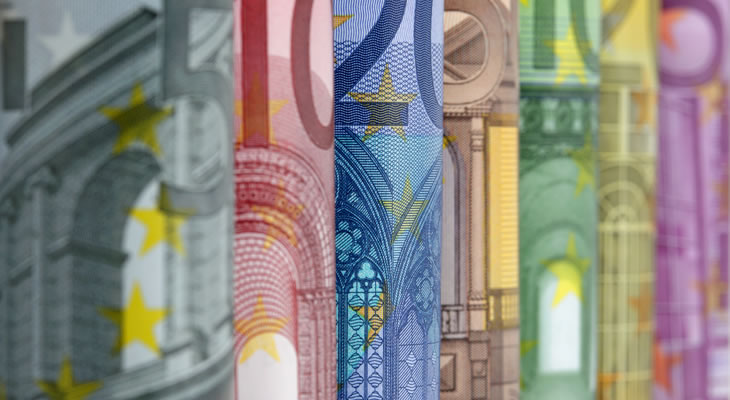- Majority of UK property funds froze withdrawals – Pound weakened as confidence in economy faltered
- German Industrial Production contracted in May – Further signs of slowdown in Eurozone’s major economy dented Euro
- Sterling rallied on positive UK production data – Brexit worries temporarily eased
- Mixed NIESR GDP estimate weighed on GBP EUR exchange rate – Lower June growth estimate diminished appeal of Pound
Pound (GBP) Gains Dented by Discouraging NIESR GDP Report
Although the NIESR GDP estimate remained relatively strong at 0.6% for the second quarter this was accompanied by a caution that growth had contracted in June. With the measure shored up by a particularly bullish April result, this subsequently saw the Pound (GBP) lose some of its momentum. Even so, the GBP EUR exchange rate remained on a stronger footing, trending higher in the region of 1.1691.
(Previously updated at 10:30 on 07/07/2016)
Demand for the Euro slumped on Thursday morning in the wake of further weak Eurozone data, allowing the GBP EUR exchange rate to strengthen.
Wave of Property Fund Freezes Extended GBP EUR Exchange Rate Downtrend
Downside pressure continued to weigh on the Pound (GBP) after the June Services PMI proved disappointing. Sector growth slowed to a thirty-eight month low of 52.3, a result which was particularly worrying given that the survey had been largely compiled before the outcome of the EU referendum was revealed. Markets were equally spooked by negative developments in the domestic housing sector, with the majority of the UK’s property funds freezing withdrawals due to a rush of investors trying to remove their money. With the property market already identified as one of the weak points of the domestic economy this wave of suspensions naturally exacerbated the worries surrounding Sterling.
Some of the confidence was knocked out of the Euro (EUR) on Wednesday, meanwhile, thanks to Eurozone data demonstrating fresh signs of weakness. German Factory Orders for May failed to recover as far as forecast, while the latest raft of Eurozone Retail PMIs showed a general slowing on the month in June. Altogether this did not encourage much hope that the currency union is in a robust condition, with the impact of Brexit-based volatility still to be seen.
Nevertheless, in spite of the Pound to Euro (GBP EUR) exchange rate recovering some ground on the back of the ensuing single currency weakness this trend did not last long. Even though the Conservative leadership contest was proceeding apace this was not enough to reassure investors, with uncertainty remaining a significant Pound deterrent.
Disappointing German Data Weighed on Euro (EUR) Demand
Although the Federal Open Market Committee (FOMC) meeting minutes released overnight indicated that the Fed is unlikely to raise interest rates in the near future this was unable to keep the Euro on bullish form. Safe-haven demand continued to favour the ‘Greenback’ (USD) over its rival, with the single currency softened as a result. Even though the Fed may not hike rates for some time to come this does not alleviate pressure on the European Central Bank (ECB), but a lack of policy divergence could benefit the Euro in the short term.
Confidence in the Eurozone’s powerhouse economy slipped sharply on Thursday morning, undermined by the German Industrial Production figures for June. Both the monthly and yearly measures fell markedly short of forecast, with annual production unexpectedly contracting by -0.4%. This fostered further anxiety over the likelihood of a significant slowdown, as Carsten Brzeski, Chief Economist at ING, noted:
‘Next to weaker production and weaker capacity utilization, new political uncertainties seem to be another impediment to investment growth. Currently, the tight labour market seems to be the only bottleneck for the industry. All in all, with the ongoing stagnation of the industry, an economic model mainly based on consumption and services might eventually turn out to be too little for sustainable economic growth. Therefore, the discussion on looser fiscal policies in Germany will not disappear.’
While the single currency slumped in response to this discouraging data the appeal of the Pound picked up. Investors were encouraged to find that UK Manufacturing and Industrial Production had bettered expectations in May, suggesting that the domestic economy had been growing robustly ahead of the EU referendum. This shored up Sterling, offering traders an incentive to buy back into the weakened currency in spite of the fact that these bullish figures are likely to have been reversed since the Brexit result.
GBP EUR Exchange Rate Forecast: Weaker UK GDP Could End Pound Rally
The GBP EUR exchange rate may struggle to maintain its current uptrend for long, with the NIESR Gross Domestic Product Estimate for June due to be released on Thursday afternoon. It seems likely that the figure will signal weakness in light of the referendum outcome, which could trigger renewed reticence towards the Pound. Any signs of optimism from the institute could offer greater support for Sterling ahead of the weekend, although momentum is expected to remain biased to the downside.
Friday’s German trade balance result for May could dent the appeal of the Euro again, providing the country’s trade surplus is shown to have narrowed on the month. Additional signs of weakness from the Eurozone could keep the GBP EUR currency pair on a stronger footing, particularly if Brexit-based worries continue to build. Also of interest will be the US Non-Farm Payrolls report, which could bolster the single currency if employment growth in the world’s largest economy is shown to have remained weaker.
Current GBP, EUR Exchange Rates
At the time of writing, the Pound to Euro (GBP EUR) exchange rate was making strong gains around 1.1712, while the Euro to Pound (EUR GBP) pairing was slumped in the region of 0.8535.


Comments are closed.